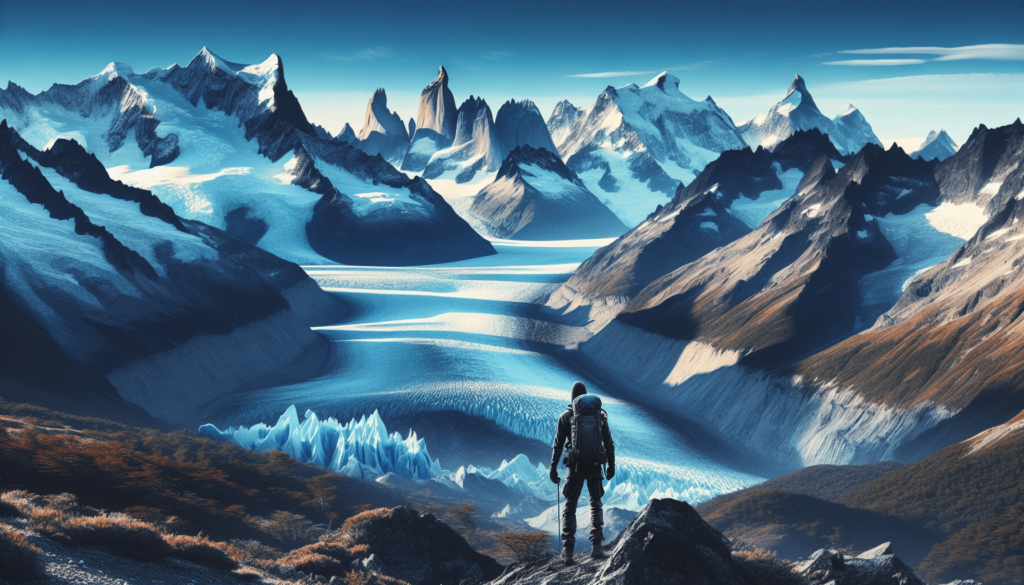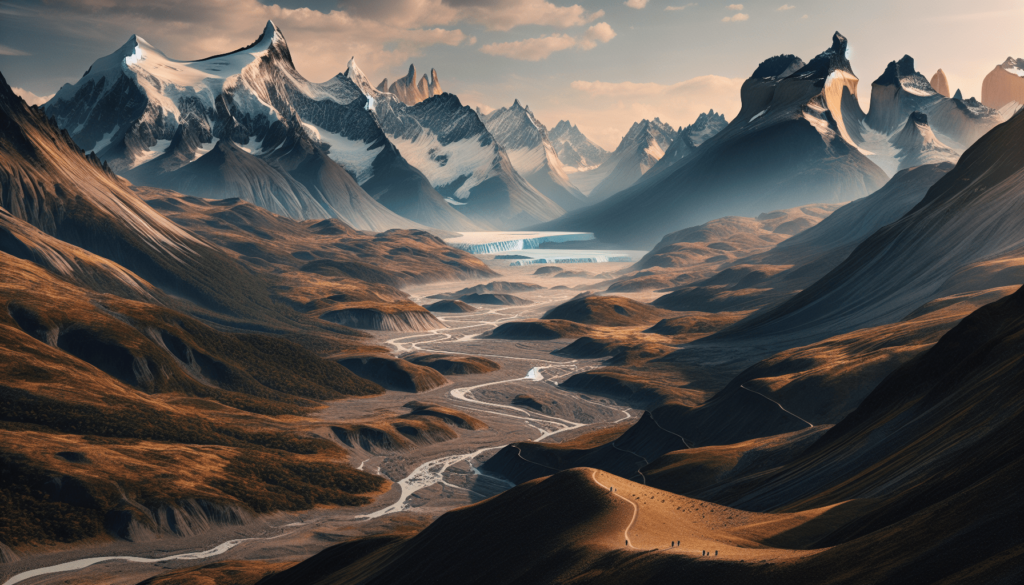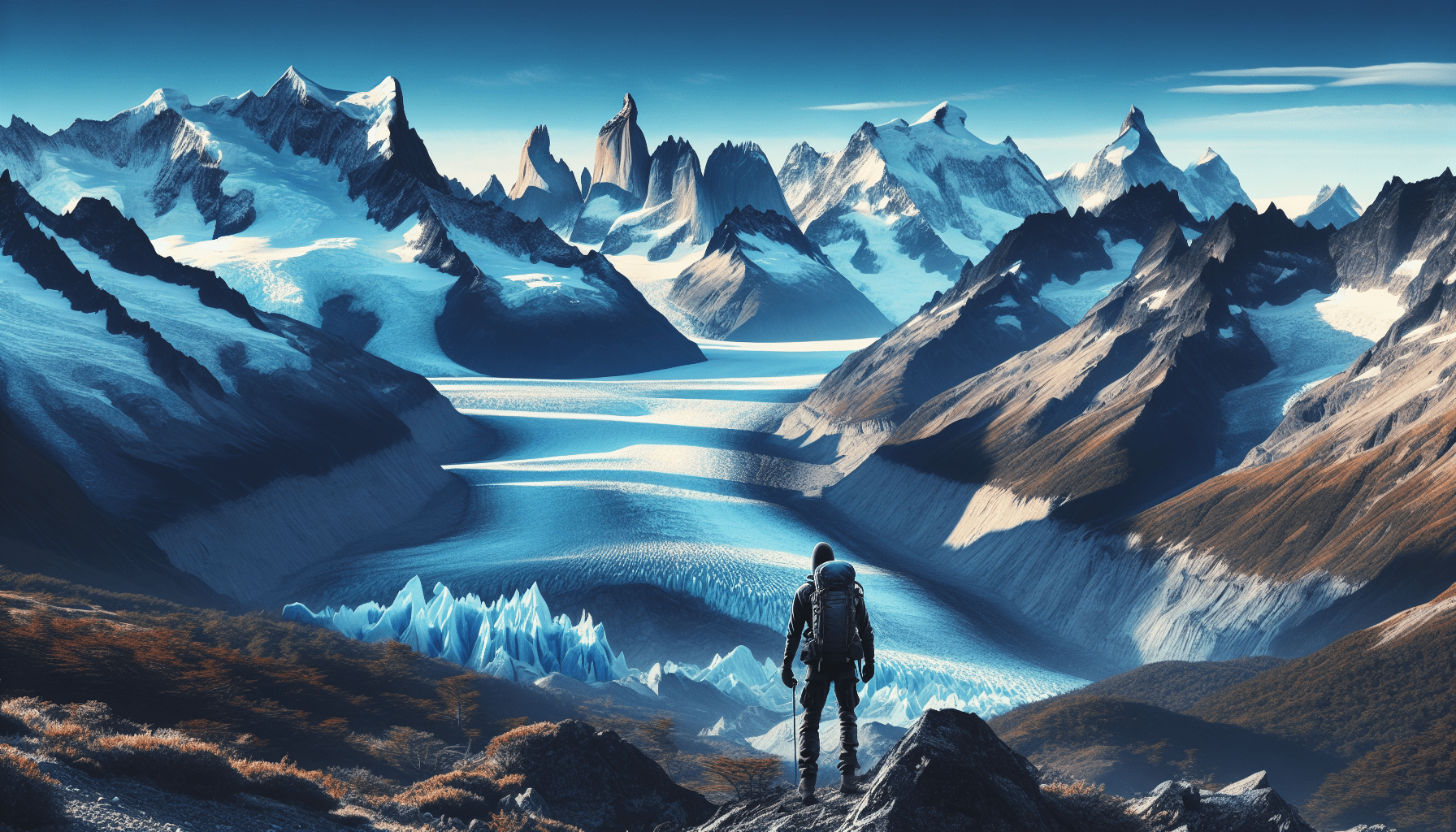Adventure Travel: Trekking In Patagonia – Imagine embarking on an exhilarating journey amidst breathtaking landscapes, surrounded by towering mountains, shimmering lakes, and majestic glaciers. This is the allure of Patagonia, a mesmerizing region located at the southern tip of South America. Set foot on this untamed land and prepare yourself for an adventure of a lifetime – trekking in Patagonia. Lace up your hiking boots, embrace the spirit of exploration, and get ready to immerse yourself in the raw beauty and untamed wilderness of one of the world’s most captivating destinations.
Planning Your Trip
Best Time to Visit
When planning your trekking adventure in Patagonia, it’s crucial to consider the best time to visit. The peak trekking season is from November to March, which is summer in the southern hemisphere. During this time, the weather is milder, and the trails are in better condition. However, keep in mind that Patagonia’s weather is notoriously unpredictable, so be prepared for changing conditions even during the summer months.
Duration of the Trip
Deciding on the duration of your trip to Patagonia depends on various factors, including your fitness level, the trekking routes you choose, and the activities you want to participate in. For a comprehensive trekking experience, a minimum of two weeks is recommended. This allows you to explore multiple trekking routes and maximize your adventure. However, if you’re limited on time, you can still enjoy a fulfilling experience with a shorter trip.
Choosing a Trek
Patagonia offers a plethora of trekking options, each with its own unique charm. The three most popular treks in the region are the Torres del Paine Circuit, Fitz Roy Trek, and W Trek. The Torres del Paine Circuit is known for its stunning mountain views, glaciers, and lakes. The Fitz Roy Trek takes you through the breathtaking landscapes of Los Glaciares National Park. The W Trek in Torres del Paine offers a shorter but equally beautiful experience. Consider the difficulty level, duration, and scenery of each trek to choose the one that suits your preferences and capabilities.
Preparing for the Trek
Fitness and Training
Trekking in Patagonia requires a certain level of physical fitness. You’ll be hiking long distances and tackling challenging terrain, so it’s important to prepare your body. Start a training regimen several months before your trip, focusing on cardiovascular exercises, strength training, and endurance. Regular hikes in varying terrain and weather conditions will help condition your body for the challenges of trekking in Patagonia.
Gear and Equipment
Having the right gear and equipment is essential for a successful trek in Patagonia. Invest in a good quality waterproof and windproof jacket, breathable layers, sturdy hiking boots, comfortable socks, and a backpack with proper support. Don’t forget essential items like a hat, sunglasses, sunscreen, insect repellent, and a first aid kit. It’s also crucial to pack lightweight camping gear if you plan on camping during your trek.
Packing Tips
When it comes to packing for your trek, less is more. Pack lightweight and quick-drying clothing that can be layered for changing weather conditions. Bring a sufficient number of socks and underwear, as keeping your feet and body dry is crucial. Consider packing lightweight food items and a stove if you plan on cooking your meals. And, of course, don’t forget your camera to capture the breathtaking landscapes of Patagonia.

Getting to Patagonia
Flights to Patagonia
Getting to Patagonia usually involves flying into either Punta Arenas in Chile or El Calafate in Argentina. Both cities have international airports that connect to major cities in South America. From there, you can take domestic flights or buses to reach the specific Patagonian region you’re planning to explore. It’s recommended to book your flights well in advance to secure the best deals and ensure a smooth start to your adventure.
Local Transportation
Once you’ve arrived in Patagonia, you’ll need to consider local transportation to reach trailheads and move between different trekking areas. Buses and shuttles are the most common means of transportation in the region. They offer reliable services and connect various towns and national parks. It’s important to check the schedules and plan your transportation in advance, especially during the peak trekking season when demand may be higher.
Accommodation Options
Camping
Camping is a popular choice for trekkers in Patagonia, allowing you to immerse yourself in nature and enjoy the freedom of the outdoors. The region offers designated campsites with basic facilities, including toilets and sometimes even showers. If you plan on camping, make sure to bring a lightweight tent, sleeping bag, camping stove, and other necessary camping gear. It’s essential to follow responsible camping practices and leave no trace of your presence.
Refugios and Lodges
For those looking for a more comfortable trekking experience, refugios and lodges are available along the popular trekking routes. Refugios are mountain huts that provide dormitory-style accommodation, hot meals, and communal areas. Lodges offer private rooms and a higher level of comfort. It’s important to make reservations in advance, especially during the peak season, as these accommodations can get fully booked quickly.
Hotels and Hostels
If you prefer to have a base camp and explore the Patagonian region through day hikes, staying at hotels or hostels is a convenient option. In towns like Puerto Natales and El Chaltén, you’ll find a range of accommodation choices to suit every budget. Staying in hotels or hostels allows you to enjoy a comfortable bed, hot showers, and the opportunity to explore the local town’s amenities after a day of trekking.

Popular Trekking Routes
Torres del Paine Circuit
The Torres del Paine Circuit is considered one of the most rewarding and challenging treks in Patagonia. It takes around eight to ten days to complete the full circuit, covering approximately 80 miles of diverse landscapes. The route offers breathtaking views of glaciers, turquoise lakes, and the iconic Torres del Paine granite peaks. It’s important to be well-prepared and have good navigational skills for this trek, as the trail can be demanding and unpredictable.
Fitz Roy Trek
The Fitz Roy Trek, located in Los Glaciares National Park, is a paradise for nature enthusiasts and photography lovers. This trek takes you through stunning valleys, glacial lakes, and granite peaks, with the iconic Mount Fitz Roy as the centerpiece. The trek can be completed in three to five days, depending on the chosen route and desired side trips. Be prepared for unpredictable weather and breathtaking views that will leave you in awe.
W Trek
The W Trek is the most popular and accessible trek in Torres del Paine National Park. It’s called the “W” trek due to its shape, which covers three main valleys. The trek can be completed in four to five days, allowing you to experience the beauty of the park’s highlights, including the Grey Glacier, French Valley, and the base of the Towers. The W Trek offers a good balance between challenge and breathtaking scenery, making it suitable for trekkers of various abilities.
Safety and Health
Altitude Sickness
While Patagonia doesn’t have high altitudes like other trekking destinations, altitude sickness can still occur, especially in certain areas with elevation gain. It’s important to acclimatize properly by gradually ascending and allowing your body to adjust to the changing altitude. Stay hydrated, avoid alcohol, and listen to your body if you experience any symptoms of altitude sickness, such as headaches, dizziness, or nausea. Remember, safety should always be your top priority.
Weather Conditions
Patagonia is known for its unpredictable and rapidly changing weather conditions. It’s crucial to be prepared for all types of weather, including strong winds, rain, snow, and even intense sunshine. Dress in layers, carry waterproof gear, and always check the weather forecast before setting out on your trek. Be flexible and prepared to adjust your plans if the weather deteriorates, as safety should always come first.
Wildlife Safety
Patagonia is home to diverse wildlife, including guanacos, foxes, and even pumas. While rare, encounters with wildlife can happen during your trekking adventure. Keep a safe distance from any wild animals you encounter, never feed them, and avoid getting between a mother and her offspring. Make sure to properly store your food and garbage to prevent attracting wildlife to your camping area. Respecting the natural habitat of these animals is key to their conservation and your safety.
Guided vs. Independent Trekking
Pros and Cons of Guided Treks
Opting for a guided trek in Patagonia can provide several advantages. Guides have extensive knowledge of the region, its flora and fauna, and can enhance your overall trekking experience with informative commentary. They can also take care of logistics such as transportation, accommodation, and meal planning, allowing you to focus solely on the adventure. However, guided treks can be more expensive, less flexible in terms of itinerary, and may limit your sense of exploration and self-discovery.
Benefits of Independent Trekking
Independent trekking allows you the freedom to create your own itinerary, explore at your own pace, and immerse yourself fully in the natural beauty of Patagonia. It gives you the chance to challenge yourself, navigate your way through the trails, and truly experience the journey on a personal level. Independent treks also tend to be more cost-effective, as you have full control over your budget. However, it’s essential to be well-prepared, have good navigational skills, and take responsibility for your safety and well-being.
Tips for a Successful Trek
Start Early
To make the most of your trekking days, it’s advisable to start early in the morning. This allows you to cover more distance while enjoying cooler temperatures and better lighting for photography. Starting early also gives you more flexibility in case you encounter any unexpected challenges along the way. Plus, witnessing the sunrise over the Patagonian landscapes is an unforgettable experience that shouldn’t be missed.
Stay Hydrated
Staying hydrated is of utmost importance while trekking in Patagonia. The dry and windy climate, combined with physical exertion, can lead to rapid dehydration. Carry an adequate supply of water and refill whenever possible. Avoid relying solely on natural water sources, as they may not always be safe for consumption. Hydration packs or water purification systems can be helpful to ensure a continuous supply of clean water throughout your trek.
Take Breaks
During long treks, it’s essential to listen to your body and take regular breaks. Resting not only allows you to recover physical strength but also gives you the opportunity to appreciate the incredible landscapes surrounding you. Use your breaks to refuel with snacks, stretch your muscles, and take in the beauty of Patagonia. Remember that trekking is not only about reaching the destination but enjoying the journey itself.
Respecting the Environment
Leave No Trace Principles
When venturing into the pristine wilderness of Patagonia, it’s paramount to follow the Leave No Trace principles. Pack out all trash, including biodegradable waste, and dispose of it properly in designated bins. Minimize your impact on vegetation by staying on marked trails and avoiding unnecessary trampling. Respect the natural beauty of the area and leave it as you found it, ensuring future generations can also enjoy the wonders of Patagonia.
Responsible Camping
Camping responsibly goes hand in hand with preserving the fragile ecosystems of Patagonia. Choose established campsites whenever possible and follow the guidelines set by park authorities. Keep noise to a minimum, avoid using detergents or soaps near water sources, and use designated bathroom facilities or bury human waste at least six inches deep. Taking these measures ensures the longevity of the camping areas and protects the delicate balance of the natural environment.
Protecting Wildlife
Patagonia’s wildlife is unique and should be protected during your treks. Observe animals from a safe distance, without interfering with their natural behaviors. Avoid making loud noises or sudden movements that may startle or stress them. Do not approach or feed any wildlife, as it disrupts their natural feeding patterns and can lead to dependency on humans. By respecting the wildlife, you contribute to the conservation efforts and help maintain the ecological balance of the region.
Other Adventure Activities
Ice Climbing
If you’re seeking an adrenaline rush and have some mountaineering experience, ice climbing in Patagonia is a must-try activity. The region offers numerous ice walls, glaciers, and frozen waterfalls that attract climbers from around the world. A guided ice climbing tour can provide the necessary equipment, instruction, and guidance to safely explore the frozen wonders of Patagonia.
Kayaking
For a different perspective, consider exploring Patagonia’s waterways by kayak. Paddle through pristine lakes, fjords, and rivers, surrounded by towering mountains and glaciers. Kayaking allows you to embrace the tranquility and serenity of Patagonia while immersing yourself in its incredible natural beauty. Guided kayaking tours are available for different skill levels, ensuring a memorable adventure for everyone.
Horseback Riding
Experience the spirit of Patagonia by embarking on horseback riding excursions through its vast landscapes. Guided tours provide the opportunity to ride through valleys, forests, and river crossings, all while enjoying panoramic views of the surrounding mountains. Horseback riding allows you to cover larger distances and explore remote areas that are otherwise inaccessible. Whether you’re an experienced equestrian or a beginner, horseback riding in Patagonia is an unforgettable experience.
Adventure Travel: Trekking In Patagonia
Trekking in Patagonia offers an unparalleled adventure amidst breathtaking landscapes and a connection to nature that is truly awe-inspiring. By properly planning your trip, preparing for the trek, understanding safety measures, and respecting the environment, you can ensure a successful and memorable experience in this remarkable destination. So pack your bags, lace up your boots, and get ready to embark on the trekking adventure of a lifetime in Patagonia!
Hopefully, you have managed to quench your thirst for an adventure holiday to Patagonia, and our article gave you some interesting information to help in that endeavor. Why not take a look at ‘Discovering The Ancient Civilizations Of South America‘.

